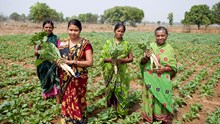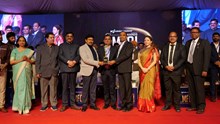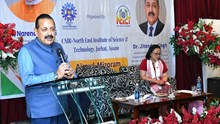
The livestock sector is a cornerstone of India’s agriculture, contributing significantly to income, nutrition, and employment. Dairy production, being the largest component, is highly dependent on efficient reproduction in cattle. India is the largest producer in the world accounting for 25% of global milk production.
One of the most important requirements for a successful dairy herd is an animal's capacity for reproduction. Dairy farmers gain the most of benefit from the cattle when their herd produces one crop of calves year. Strong production and reproduction are essential requirements for the dairy industry's success. Timely onset of puberty and breeding potential marks the start of a cow's productive life cycle. Regular cycles of conception and calving are required in order to acquire proper lactation period, which is an essential part of a cattle’s productive life. Consequently, having a strong reproductive rhythm in a herd is crucial. It follows that any issues with herd reproduction might have a devastating effect on the dairy farm. To protect the herd, the farmer’s income and to reduce the potential loss possible, these problems need to be identified and fixed as soon as possible.
Among various reproductive disorders, repeat breeding is one of the most challenging issues causing serious economic losses. Repeat breeder cows are a huge source of financial loss and the reason for downfall of every dairy business.
What is Repeat Breeding?
Repeat breeding occurs when an animal does not conceive after three or more successive services either natural or artificial at regular intervals of 18 to 22 days without exhibiting any discernible defects. One of the main reproductive issues affecting dairy cattle that costs farmers money is repeat breeding.
Significance
-
Depending on the severity of the problem and the corrective actions performed, recovery might take several months to a year.
-
Treatment, upkeep (including the expense of hired labour), and feeding during the unproductive time will result in a larger financial loss.
-
The cow's overall lifetime milk output decreases.
-
If the sickness has an infectious etiology, there is probability of its spread to the herd's other healthy cows.
The overall effect is extended calving intervals, reduced milk yield and lifetime productivity, and increased treatment costs.
Causes of Repeat Breeding
-
Nutritional Deficiencies: Repeat breeding may result if concentrate feed lacking the necessary ratio of various feed elements, such as vitamins and mineral combination, is supplied. Nutritional deficiencies affect the overall health of the animal. It has direct effect on hormonal balance and ovarian function. Energy and protein deficiency leads to negative energy balance leading to inactive ovaries and delayed return to oestrus postpartum. Vitamin A and E are required for maintaining reproductive health so their deficiencies play a critical role in repeat breeding. Mineral deficiencies including calcium, phosphorus, copper, zinc, and iron affect overall fertility.
-
Defects of the genital tract/organs: there may be congenital defects or acquired defects of the genital tract. These result into
-
Anovulatory heat- Although the heifer or cow exhibits every outward sign of heat, the ovary is unable to release the egg, or ovum.
-
Delayed ovulation- Fertilization does not occur if the ovary releases the egg (ovum) a little later than expected.
-
The ovaries may develop cysts or other abnormalities.
-
Repeat breeding may also result from reproductive organ problems, such as a cow or heifer's blocked fallopian tubes.
-
-
Early embryonic death (within 16 days after A.I./service) - Within 16 days after AI or natural service, the embryo may occasionally die in the mother's womb for a variety of reasons, including excessive stress (during transit, the summer, etc.), malnourishment, a lack of pregnancy hormone, uterine infection, etc.
-
Age - The likelihood of recurrent breeding increases with the age of the cow. Dairy cows' fertility improves from the first or second parturition until the fourth or fifth, at which point it progressively decreases.
-
Uterine infection – uterine infections causing endometritis create a hostile environment for embryonal implantation. It's possible that cow or heifer acquires certain reproductive system illnesses because of infection with bacteria (like Campylobacter spp.), fungi (like Candida), or protozoa (like Trichomonas). This causes early embryonic demise and negatively impacts the normal state of the uterus. This is one of the main reasons for recurring breeding.
-
Faulty Artificial insemination (AI):
-
Conception failure may result if the heifer or cow is not inseminated within the appropriate window of time during its heat phase (12–18 hours from the start of heat).
-
The AI may not result in conception if the AI worker handles and/or stores the frozen semen improperly. It's possible that the inseminator handled the semen straw incorrectly or that the cold chain was not maintained by having an inadequate amount of liquid nitrogen.
-
Conception failure will also result from contaminated AI equipment.
-
-
Prolonged oestrus period: Some cows have oestrus for longer than the typical 24-hour period—up to 72 hours.
-
Service by an infected breeding bull: If the bull has a venereal disease such as Trichomoniasis, Vibriosis, etc., when mating, it will spread the illness to the heifer or cow and result in recurrent breeding, if natural services are used.
Measures to be adopted to reduce the occurrence of repeat breeding
Improve Nutrition: Ensure the herd has a well-balanced diet that includes adequate energy, protein, and a high-quality mineral and vitamin supplement. This is especially crucial for high-producing dairy cows.
Accurate Heat Detection: Train yourself and your staff to recognize the subtle and obvious signs of heat. Using aids like tail paint, heat detection patches, or activity monitors can significantly improve your accuracy.
Timing is Everything: Once a cow is in heat, inseminate at the optimal time, which is usually 12-18 hours after the first signs of standing heat. Careful monitoring and provision of appropriate information such as informing the inseminator the first hear sign, the length of oestrus time in preceding hear decides the effectiveness of the insemination.
Health and Hygiene: Maintain a clean environment to reduce the risk of infections. Regular herd health checks and prompt treatment of any reproductive issues are also vital.
Consult a Professional: If you have repeat breeder cows, consult a veterinarian. They can perform a thorough examination to diagnose the underlying cause and recommend a targeted treatment plan, which might include hormonal therapy or other possible interventions.













Share your comments